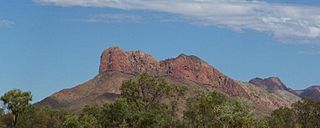Molly Jugadai Napaltjarri facts for kids
Quick facts for kids
Molly Jugadai Napaltjarri
|
|
|---|---|
| Born | c.1954 Haasts Bluff, Northern Territory, Australia
|
| Died | 2011 (aged 56–57) |
| Nationality | Australian |
| Known for | Painting |
Molly Jugadai Napaltjarri (born around 1954 – died 2011) was an important Aboriginal artist from Australia. She spoke the Pintupi and Luritja languages. Her beautiful paintings are kept in big art collections, like the National Gallery of Australia.
Contents
About Molly Jugadai
Molly Jugadai was born around 1954 in a place called Haasts Bluff, Northern Territory. She was the oldest daughter of two artists, Narputta Nangala and Timmy Jugadai Tjungurrayi. It's hard to know her exact birth year because Aboriginal people often measure time differently, linking dates to other important events.
Molly had a younger sister, Daisy Jugadai Napaltjarri, who was also an artist. Daisy passed away in 2008.
What is a Skin Name?
Napaltjarri is a special name called a skin name. It's part of a system used by Aboriginal people in central Australia. These names help show how people are related to each other. They also help decide who can marry whom and might be linked to certain animal or plant totems.
Even though skin names can be used to address someone, they are not like last names in European cultures. So, "Molly Jugadai" is the part of her name that is truly hers.
Molly Jugadai Napaltjarri passed away in 2011 in Alice Springs.
Her Art
The Start of Western Desert Art
Modern Aboriginal art from the Western Desert began in 1971. This was when Aboriginal men in Papunya started painting with help from a teacher named Geoffrey Bardon. They used acrylic paints to create designs that looked like body paint and ground sculptures.
This new way of painting quickly spread across central Australia. By the 1980s and 1990s, these artworks were shown all over the world. At first, only men were painting, and some Pintupi men didn't want women to paint. But many women wanted to join in, and in the 1990s, lots of them started creating their own paintings.
Molly's Artistic Journey
Artists from the Western Desert, like Molly, often paint special stories called Dreamings. These are stories they have a personal connection to or rights over. Molly's Dreamings were about the seven Napaltjarri sisters and Kaarkurutintya (Lake Macdonald).
Molly's art was shown in many exhibitions. In 2004, she had a group show at Michael Eather's Fire-Works Gallery and a solo show at Sydney's Hogarth Gallery. After that, she took part in many more group and solo exhibitions. One of her paintings was even used on the cover of a book in 2005.
Molly was very important in starting the Ikuntji Artists Aboriginal Corporation. This art center was set up in the mid-1990s. Today, Ikuntji Artists still represents Molly's work.


